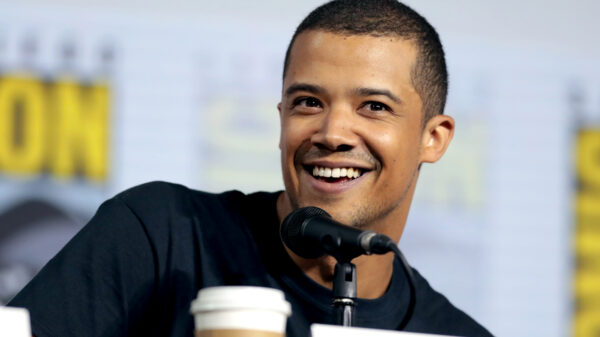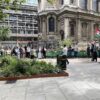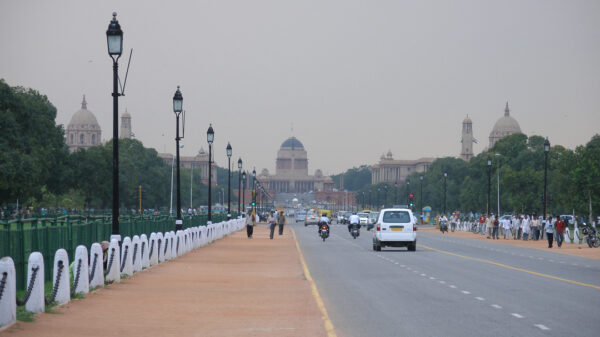Roar writer Karen Ng attended the 2020 Raindance Film Festival’s Q&A session for the new documentary The Past is Always New, The Future is Always Nostalgic: Photographer DaidÅ Moriyama. Director Gen Iwama provides insights on Moriyama’s approach to photography, his philosophy, and the filming process.
The Q&A begins with Gen Iwama’s self-identification as an “old new director,†whose intimate Photographer DaidÅ Moriyama 1996: What Did the Dog On The Street See? was first broadcasted over two decades ago. He describes a 2016 talk show he and Moriyama took part in, where an audience member asked, “Mr. Iwama, why don’t you shoot the current DaidÅ Moriyama on TV now?â€, expecting a changed Moriyama after so many years – which Iwama understands. “Photography has changed a lot. Camera and shooting methods have changed a lot. In each country – from analog to digital. However, DaidÅ Moriyama continues to shoot the city without changing his style at all. It is such an interesting situation.â€
Iwama explains the question prompted him to direct the new The Past is Always New, The Future is Always Nostalgic: Photographer DaidÅ Moriyama. “[It] suddenly hit me. I saw that there must be something to express today. What is the current state of DaidÅ Moriyama? He is now a big name. A few years ago, he held an exhibition with William Klein at the Tate [Modern] in London. Photographs from around the world…†Realising the potential for Moriyama’s work to be shown through fresher eyes, Iwama contacted him about the documentary. He recalls Moriyama’s response: “I don’t like large groups of filmmakers for movies. But if you shoot alone, I allow it.†Iwama was surprised, “but inspired,†he adds. He agreed. “In this way, I was in charge of shooting, editing, and directing. I was in charge of three roles at the same time. One year for shooting, one year editing. I was very happy… Because I made it myself – so I cannot blame anyone.â€
“He works for a surprisingly long time. He shoots a surprising amount.†Describing Moriyama’s work process, Iwama shares how he noticed the consistency in his attitude, with his artistic method closely mirroring the style he documented in 1996. “It is wonderful that this hasn’t changed at all. People usually change with certain things – with ageing, and passing of time. I was very impressed with his unchanged appearance.†Thoughtfully, Iwama continues, “He takes a quick shot and walks away. I couldn’t be [there] in time to shoot him. I decided never to turn off the video. I was surrounded by a lot of material – it took about 500 hours [to edit].â€
I ask Iwama what aspect of Moriyama he most wanted to relay to the audience. “He often says, the camera is just a practical tool. I don’t care about the camera model. Anything you can find… In fact, his camera is very small – never expensive. He wants people to like photographs more and more. He said to me, like this, ‘This is a nice movie. I’m glad. I hope people will like photography more through this movie.’†Acknowledging Moriyama’s preference for mass-printed photographs, Iwama further explains his approach to the new documentary. “[Moriyama] says he likes them more than original print[s]. For him, mass printing is inseparable from his photographic expression. I decided to make this movie a story of photographs.â€
In direct contrast to Moriyama’s famous black and white photographs, The Past is Always New, The Future is Always Nostalgic is filmed in a very colourful, saturated style. What inspired that choice? Pointing to the documentary title, he reflects: “The past is always new, the future is always nostalgic. It’s usually the opposite, isn’t it? Usually, the past is always nostalgic, the future is always new.â€
The title takes direct inspiration from a collection of essays of the same name, written by DaidÅ Moriyama in 2000. “He says in his essay: ‘in the past there [are] signs leading to the present. In the future, there are known things that are hidden. The past is not just a memory that has passed. The future is not a dream world that we haven’t seen yet. The past and future are mixed to create the present.â€
Iwama sees a parallel between Moriyama’s philosophy and art. “When I read his essay, I thought, it’s just his creation method. His all black and white photographs work, as if they are taken just now. On the contrary, his new colourful photographs are nostalgic as if they were taken decades ago. Colour and monotone [are] related to the mixed past and future.â€
In light of the ongoing Covid-19 pandemic, Iwama also considers his documentary’s post-production impact. Describing pre-pandemic society as “very fresh and colourfulâ€, he continues, “this film records the world before the pandemic – of course, not what I was aiming for… However, as a result, it is interesting to see the former appearance of New York, Paris and Tokyo. People are crowded without masks. Many people were gathering in the spaces in the streets. Cities around the world, full of energy and excitement.â€
As the Q&A session closes, I ask Iwama one last question: what does he think of budding art and street photographers can learn from Moriyama’s photographs? He considers this before drawing attention to his method once more: “[Moriyama] often says, the amount of photographs is more important than quality. Work, work, work, work, and take a picture, take a picture, take a picture, take a picture – every day. That’s all. And [the] camera is just a practical tool. Don’t care about the expensive camera models. No, anything is okay. The most important [thing] is working and taking [photos]. That’s all.â€
Karen is a journalist based in Hong Kong, London and New York City. She is a third year Liberal Arts student at King's College London, majoring in English and also studying Politics, Philosophy, Classics, Digital Culture, French, History and creative writing. She is a poet, photographer and musician, and is passionate about reporting on and discussing local issues and culture. Karen will begin her Master's degree in journalism at Columbia University this year.
















